This week for The Field Trip, I’m reporting on Northern State Hospital, a facility that held psychiatric patients for roughly 60 years until it closed in 1973. Northern State stands only half an hour from me, and an hour from where I grew up, but somehow I only learned about it recently.
Two weeks ago, I visited the grounds of the hospital during an event designed to share history and gather materials for local museums. I found the place fascinating, haunting, and evocative. Read on!
A Brief History
Northern State Hospital sits just outside the small town of Sedro-Woolley where the foothills of the Cascade Mountains begin. It originated as the idea of local boosters who wanted to attract jobs. Initially, it began as a farm to grow food for Western State Hospital, located 120 miles to the south near Tacoma.
Patients were shipped north to clear the land and start farming. Almost immediately, authorities decided to build a second hospital. It operated until 1973 when, as a cost-saving measure, the state closed it down. Because changes in treatment (especially pharmaceuticals) reduced the numbers of patients, it was no longer feasible to operate it.
The nature of care provided evolved from the 1910s through the early 1970s. It included all sorts of therapies, including many no longer considered ethical, much less effective. NSH treated and held thousands of patients over the decades, and the staff who provided care to patients and the facility also numbered in the thousands. For a place like Sedro-Woolley (population today of roughly 13,000), it was an enormous operation.

Recent Attention
Lately, Northern State has been in the news. A series of stories in the Seattle Times highlighted the hospital’s history and ongoing efforts to reclaim some its past. I highly recommend reading all the stories and watching this excellent documentary (only 26 minutes) about the place.
The local event I attended included many speakers, offering history and personal experiences, including from the daughter of a superintendent and a former nurse. Many people with past connections attended and shared artifacts and oral histories with local museums.
But rather than recounting more of this history, I want to discuss briefly the setting and share images, because this is a newsletter about place as well as history. (Besides, I’ve written a short news article that recounts the event of the day.)

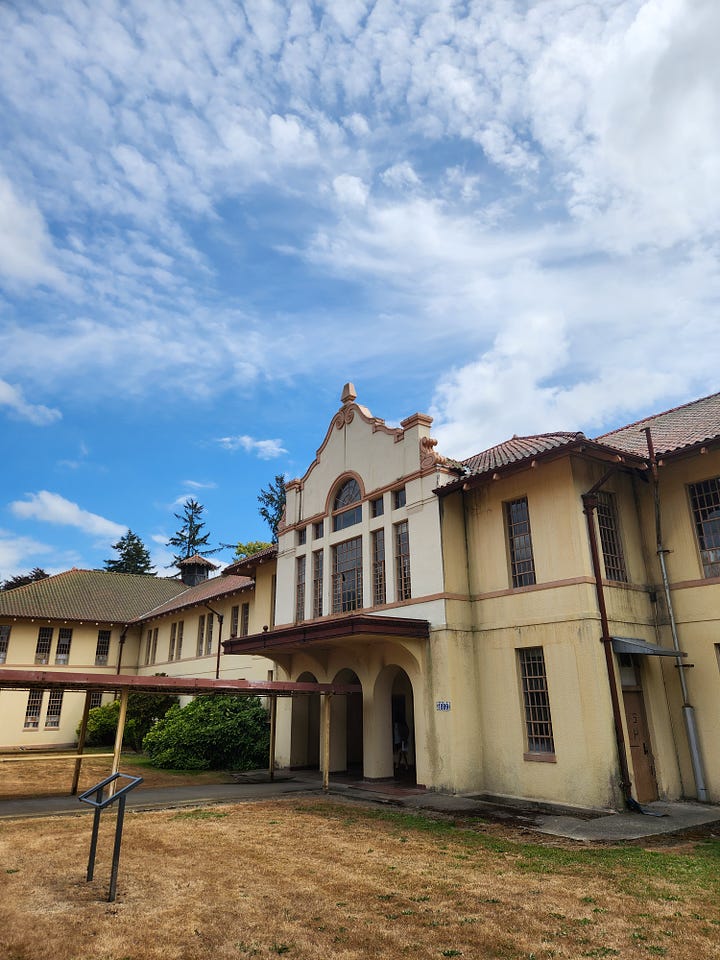
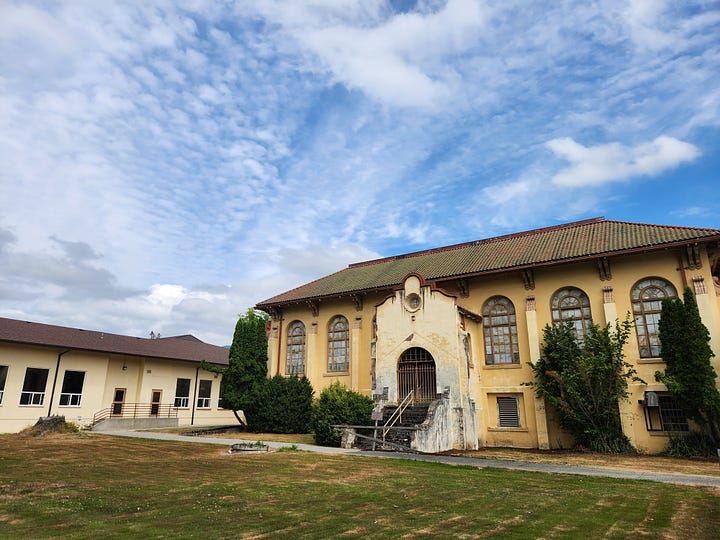

Place
Northern State’s place is not accidental or incidental; it was central to its mission.
The famous Olmsted Brothers landscape architecture firm designed the grounds (and many other places, including the grounds at the University of Idaho where I used to work). A hallmark of the firm’s approach was to integrate buildings or campuses into the wider landscape.
At Northern State, I was told, they altered the plan from a strictly north-south axis and shifted it slightly so that it afforded people a better view of the river valley below. In addition, the multi-building campus was staggered so no building blocked views of other buildings. Living with such views, landscape architects believed, would improve states of mind and help the healing.
The buildings came in two waves, one in the 1910s and another in the 1930s. Mostly in Spanish Colonial Revival style, the hospital and other buildings stand out on the grounds and among the trees and surrounding mountains. The red terra cotta roof tiles look odd in the damp Northwest. Odd, but I imagine them as stunningly beautiful when new. As a whole, it was a stately place.
Some of the campus has been repurposed, but many buildings closed down half a century ago and have remained basically unused in the time since. The normal wear and tear of weather and years along with vandalism make the buildings stand as shadows, evoking a now-distant past.
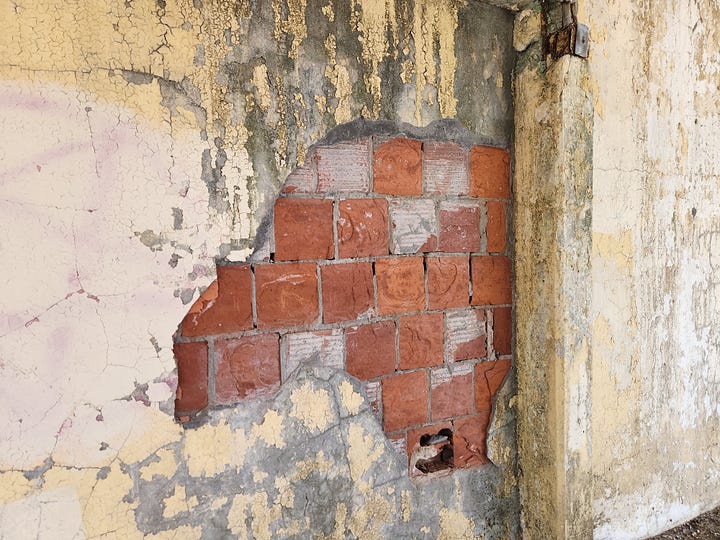
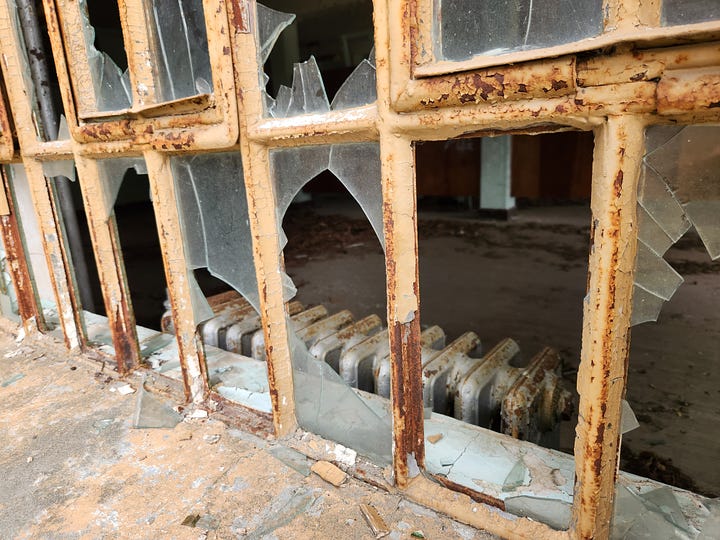
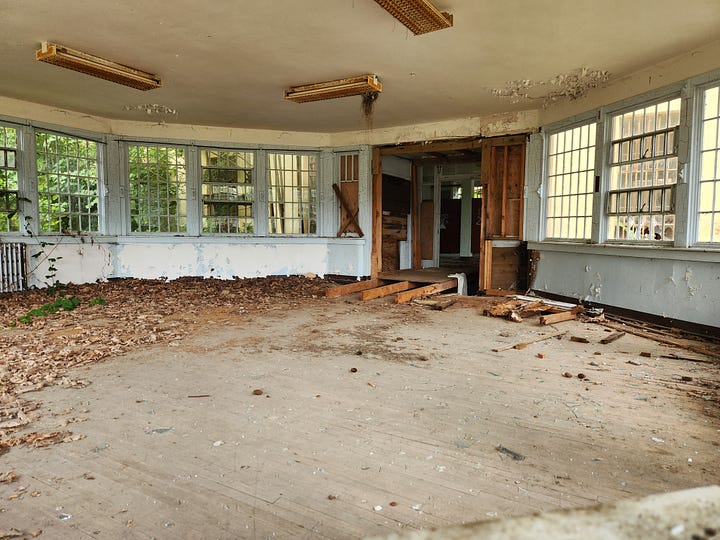
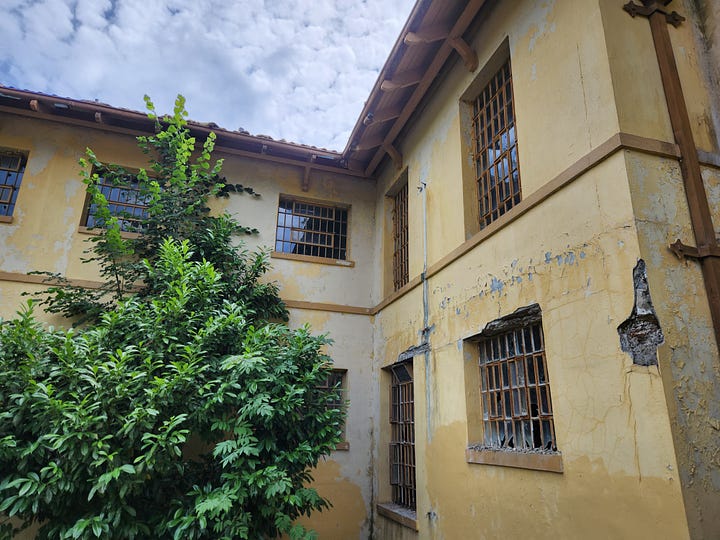
Reacting to Place
Most of the day I visited I stayed at the event, under temporary tents listening to speakers. But the highlight (other than seeing my high school journalism teacher and cross-country coach, who also reads this newsletter!) was walking the grounds. Moving around the buildings produced a couple responses. One was to imagine it in its heyday on purely aesthetic grounds. And that vision is of a beautiful place.
Another was to imagine the pain the walls contained, or tried to. Before visiting, I learned enough about the treatment to know difficult things happened here. Even so, I could move through grounds mostly thinking about it in more dispassionate ways. But toward the end of the day, I walked to a corner of a building where the steps were only partly covered by blackberries. I climbed up to peer into a broken window. It seemed obvious that this room housed patients (though I could not confirm this). The heaviness of what happened here finally settled over me with a weightiness I recognized from when I visit other places of pain, or memorials for it.
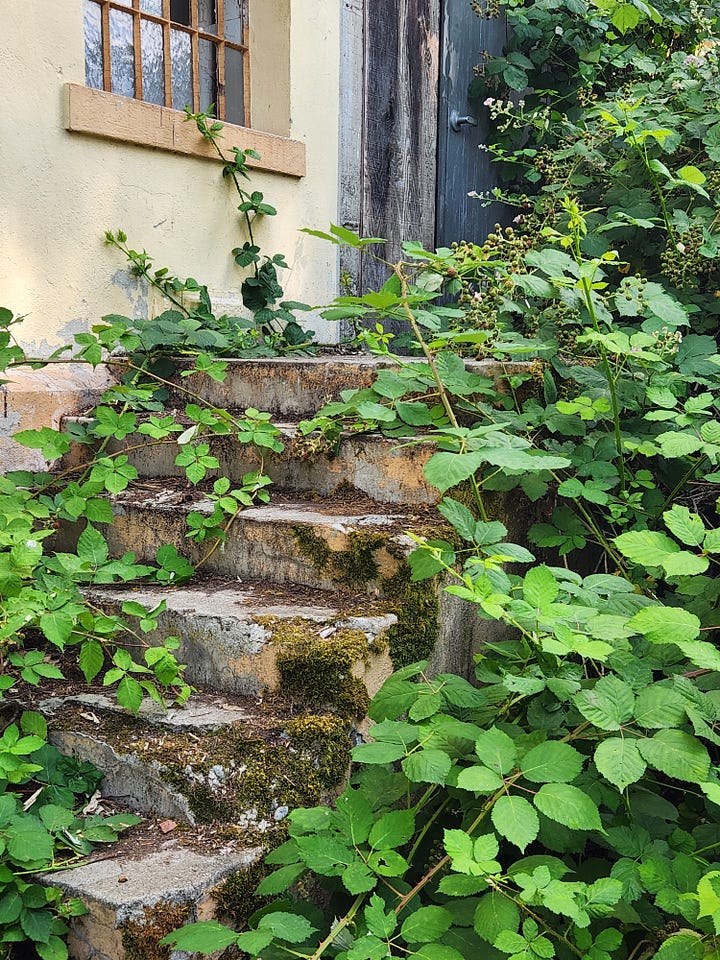

Off the Main Campus
A short walk from the main campus takes you to the farm. The buildings have fallen well into disrepair and are graffiti-ed. But as a farm kid, I found walking around the barns to be especially interesting. Doctors implemented work therapy as a popular treatment, believing it gave purpose to patients and developed skills. In truth, many patients came with all sorts of skills already. The farm – and the woodshop and much else – offered a place for those skills to produce positive outcomes. Besides reminding me slightly of the farm where I grew up, the farm offered views of the mountains. Here, away from the red roofed main campus, I knew I was in the Pacific Northwest.
Just beyond the farm stood an empty field. Not quite empty. It is the hospital’s cemetery. The documentary linked above tells its story well. The short version is that patients who died and whose families did not claim them (especially Catholics) ended up here. A local man became fascinated by this place. When he first visited, he found about two dozen simple stones visible. Only numbers and initials marked the stones. He has now found about 600 and resurfaced 200 of them. Perhaps another 1200, or 1600, remain buried and unmarked. His work reclaims these lives and memories in small, meaningful ways.
Walking through the quiet cemetery at the end of the day when the sun was starting to fall punctuated my day, reminding me of the tragedies of the past, and the goodness of people trying not to forget.
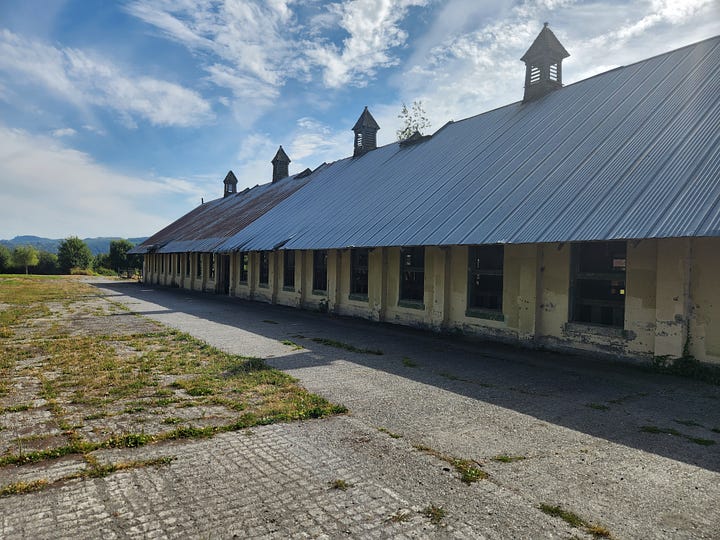
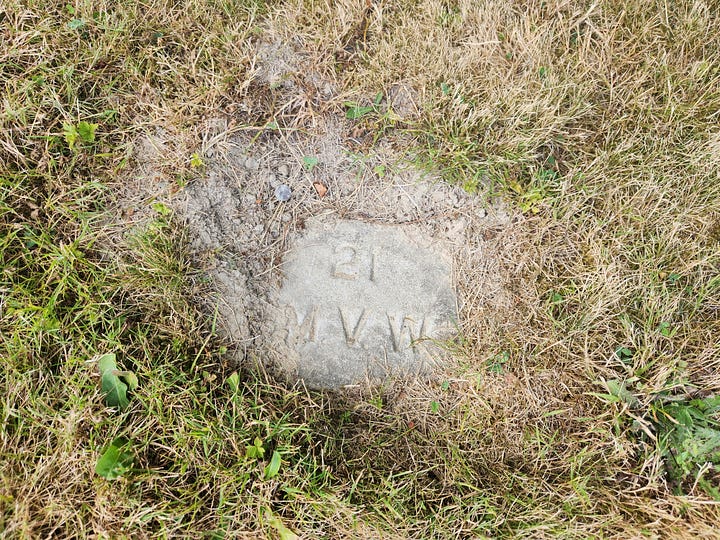

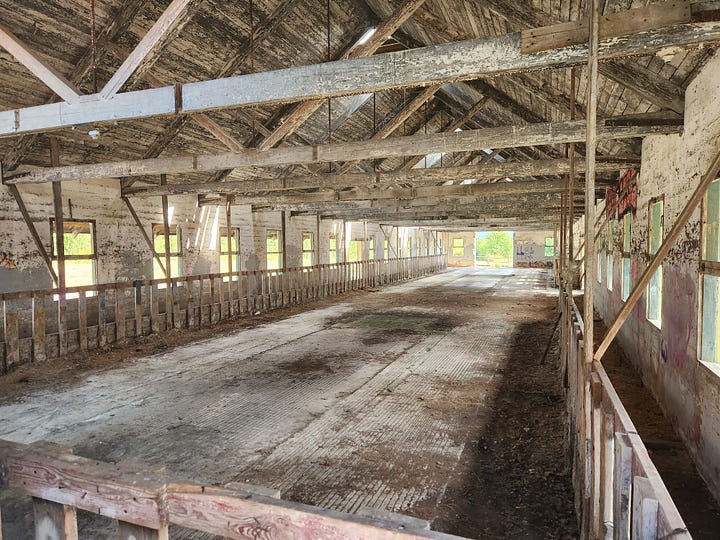
Final Words
This field trip’s topic was a bit off my well-worn paths. I have no related writing to share, except my short news story about the event.
As always, you can find my books, and books where some of my work is included, at my Bookshop affiliate page (where, if you order, I get a small benefit).
Taking Bearings Next Week
Next week, I head to The Library here. My plan – subject to change – is to read from Frederick Law Olmsted, the father of the brothers whose firm designed the NSH campus. Stay tuned!
Reminder, through August, to celebrate Taking Bearings’ one-year anniversary, paid subscriptions are 20% off.


